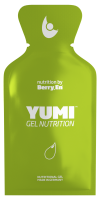The Ocean's superfood
Why brown algae have always been regarded as valuable foods and should be a regular part of the diet.
Brown seaweed as a source of health
Seaweeds are one of the most healthiest foods in the world and of great importance in Asian cultures. In chinese medicine, they have been used for millenniums, for example for detoxification. Japanese cuisine would be unthinkable without these extremely nutritious vegetables. Because of the nature of the sea that surrounds the Japanese archipelago, the variety of water plants there is vast: From green to red and also brown seaweeds or algae. Today, the health-promoting properties of algae can be proven scientifically. Many international studies show their positive effect on human health.
At the beginning of the 20th century, more precisely in 1913, the Swedish doctor Johann Harald Kylin discovered a certain polysaccharide in brown algae. Kylin was also a botanist and researcher for aquatic plants, with a professorship at the University of Uppsala. Polysaccharides are complex carbohydrates that are composed of a multitude of various simple sugars or monosaccharides. Kylin’s analyses revealed that the polysaccharide mainly consists of fucose molecules. The suffix -ose in fucose reveals that chemically it is a simple sugar or monosaccharide. The polysaccharide in brown algae is some type of dietary fiber - similar to cellulose which also is a polysaccharide but does not dissolve in water. The water-solubility of the carbohydrates in brown algae explains their watery gel-like consistency. Fucose is an essential component of the carbohydrate cell membranes in our body, the exterior cell layer which defines and protects the cell from the external environment. By eating fucose-rich foods, we can support our cells in repelling harmful particles that are foreign to the body such as viruses, bacteria, allergens and mutated body cells.
If you wish to benefit from brown algae, you can generally integrate them into your diet. Since they are hard to obtain in fresh quality in many non-coastal regions of the world, they are most common in form of dried seaweed such as wakame or kombu. Due to their naturally high amount of iodine and salt, a high consumption of dried seaweed is not advisable. It is totally different though with brown seaweed extract which only contains traces of iodine and salt. In brown seaweed extract, high amounts of polysaccharides are concentrated. It is preferably used to boost the body's immune system. A particularly high quality of the extract is obtained by extracting only wild-grown brown algae that are harvested manually. Moreover, a specific procedure of extraction is necessary: Cold-water extraction uses no chemical solvents or ethanols. This guarantees a solvent-free high purity. The brown algae variety Fucus vesiculosus which represents a particularly rich source of fucose, is native to the cold waters of the North Pacific and North Atlantic and also the North and Baltic Sea where it grows in shallow water but also at a depth of several meters.
